Matador Network's Blog, page 1144
March 12, 2019
Best things to do in Bend, Oregon
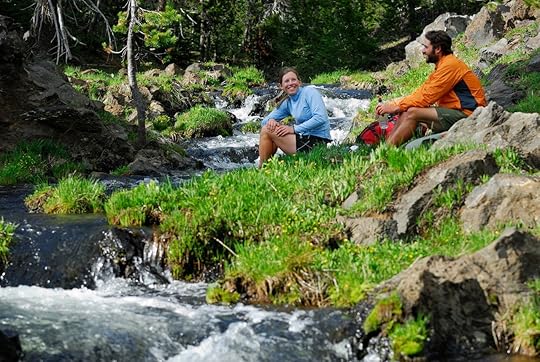
Bend, Oregon, is an outdoor lover’s dream. It offers almost anything an outdoor enthusiast could ask for. Straddling Oregon’s wet coastal region and its dry interior, complete with lakes and rivers, Bend boasts gorgeous scenery and outdoor options year round. Each season brings with it an abundance of outdoor activities — from mountain biking to skiing. Here are a few things to do in Bend during each of its four seasons.
Summer: hiking, biking, fishing, craft brews, and outdoor concerts
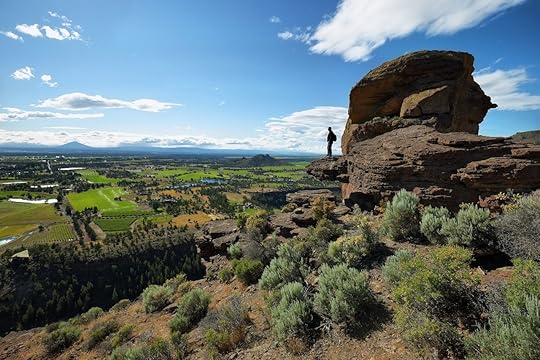
Photo: Marisa Estivill/Shutterstock
Summer is hands down the best time of year to make the most of this outdoor paradise. When the weather’s warm, Bend offers a plethora of things to do — from hiking to biking, rock climbing, rafting, golfing, fishing, and kayaking. The list is nearly endless.
Outdoor concerts at the Old Mill District in Bend kick off the sunny season during Memorial Day Weekend. Central Oregon Beer Week also starts the last week of May, celebrating Bend’s title of Beertown USA and its booming craft beer scene. You can also check out the Bend Ale Trail, the largest beer trail in the West with over two dozen breweries. Collect an official passport and get it stamped by breweries to earn a souvenir.
Most of the breweries in The Bend Ale Trail are within walking distance. For additional fun, though, you can ride the popular cycle pub, which looks like a smaller version of a trolley car with a bar in the middle. Guests sit on opposite sides of the bar and peddle for horsepower, but the main driver steers and takes you to your destination. You get to work out and drink a pint at the same time!
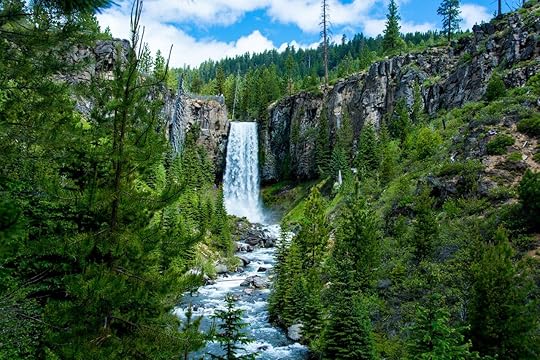
Photo: Clifford Wayne Estes/Shutterstock
For a more legit workout, Bend has plenty of hiking, mountain biking, and rock climbing options. Mt. Bachelor’s Bike Park converts ski pistes into high-speed downhill mountain bike trails. Alternatively, you can hike popular paths like the Upper Deschutes River Trail, Pilot Butte State Park, Canyon Creek Meadows, or Dry River Gorge. The Bend area also has several gorgeous waterfalls, a few of which — like Tumalo Falls, Sahalie, and Koosah Falls — are easily accessible for short hikes. Thirty minutes north of Bend, Smith Rock State Park offers incredible vistas and world-renowned rock climbing. Although temperatures can reach 100 in the high desert, summer mornings are a good time to visit.
The summer heat is a good time to get closer to the water. The Deschutes River features some Class III rapids for river rafting and will cool you off when you get soaked. For a gentler approach, try floating. On hot days, you’ll see crowds of people floating downriver on inner tubes. Plenty of signs at the various local parks show you where to go, certain rules, and shuttles to take you back to where you started.
Paddleboarding is another growing activity; beginners can sign up for lessons or simply rent stand-up paddleboards and cruise along. Lastly, the Deschutes River is home to trout, steelhead, salmon, and bass. Fly fishing is extremely popular in this area, and guides will show you the best spots to catch dinner.
Fall: fewer folks, farm-to-table feasts, and festivals

Photo: czbagby/Shutterstock
While you have the most outdoor options in summer, locals might argue that fall is, in fact, the ideal time of year in Bend. The weather is a perfect mix of cool and warm days, and the tourists are gone. In this shoulder season, when the summer crowds have gone but the skiers haven’t yet arrived, you can get lower prices and great deals on hotel stays. The hiking trails are also much more peaceful and less congested than in summer.
Fall is also the tastiest time of the year in Bend as the bounty of fruits and vegetables is plentiful. Bend has many farm-to-table restaurants that serve up seasonal, locally grown produce. The area’s high commitment to sustainability is clear in the number of local food markets.
Ariana Restaurant was one of the city’s first dining rooms to focus on hyper-local food and create Bend’s farm-to-table movement. Drake, an upscale neighborhood spot, serves local comfort food with a creative twist. At Jackalope Grill, the tasty osso bucco is slow cooked with Willamette Valley red wine and served atop sun-dried tomato polenta.
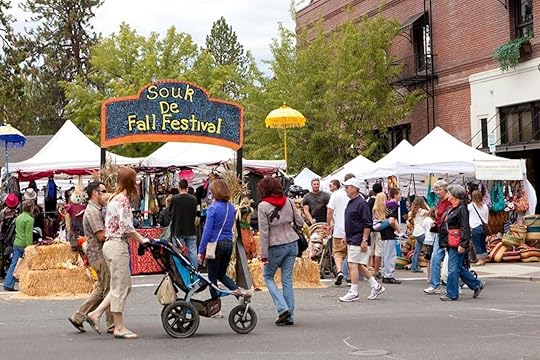
Photo: Bend Fall Festival/Facebook
The Bend Fall Festival is a huge event in October with three days of live music, local food, and plenty of activities for the family. October also hosts the Tenth Month, which is a month-long celebration of innovation in art, film, design, marketing, and technology. Several conferences and festivals are held in Bend during this month to showcase the power and beauty of the arts. Popular events include the Bend Film Festival, Swivel Digital and Creative Marketing Conference, and Friday Art Walks in downtown Bend.
Winter: snow, snow, snow… and hot springs

Photo: Sveta Imnadze/Shutterstock
Winter in Bend means snow. A lot of snow. Skiers and snowboarders flock to the trails on Mount Bachelor to enjoy an average of 30 feet of snow per year. Downhill skiing and snowboarding are extremely popular here, as winter on the mountain can last seven months. You can also enjoy Bend’s winter wonderland on a sled, snowshoes, cross-country skis, snowmobiles, ice skates, or even a fat bike on the snow.
Hiking remains popular even in the winter months due to Bend’s high desert climate. The Oregon Desert Trail crisscrosses nearly half of the state, which sees very little snow in the winter. Hikers can head to the badlands of eastern Oregon to explore its rugged canyons in mild daytime temperatures. Smith Rock State Park, popular year-round, is also a great place to hike or mountain bike.
Bend also has several volcanic caves. A walk through a lava river cave is a unique activity that you can do all year, given the steady 42-degree temps underground. With all of this volcanic activity, Bend is also home to a few hot springs. Winter is the perfect time to soak in the mineral-rich pools of Paulina Lake Hot Springs, Deer Creek, and McCredie Hot Springs.
Spring: an epic snowboarding contest and springtime hiking
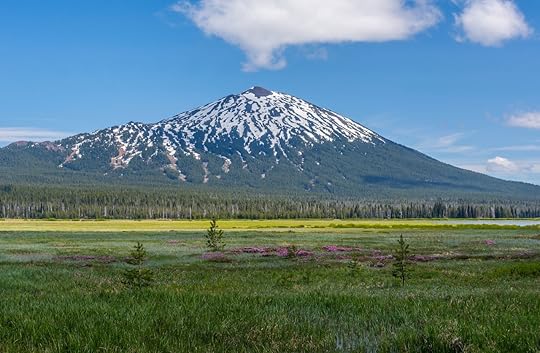
Photo: Marv Vandehey/Shutterstock
The ski season in Bend is one of the longest in the country. It usually wraps up at the end of May. It’s not surprising that one of the most popular things to do is close out the ski season with a Sunchaser Spring Ski Pass. Available April and May, this pass offers skiers the chance to get in some runs before the season closes for under $200. With plenty of warmer days and fresh powder, many locals prefer tackling the mountain during spring.
Bend’s “Big Wave Challenge” kicks off the spring season with a well-known snowboarding competition. Snowboarders compete in various categories, and they’re judged as if they are competing in a surf contest. There’s also the added bonus of a Springtacular Concert Series every Friday at Mt. Bachelor.

Photo: Reimar/Shutterstock
Even more outdoor activities start to take off in the spring, like bike races and 5K events. Besides being Beer Town USA, Bend also calls itself “Bike Town USA” as it holds a number of cycling events throughout the year. The city has several scenic byways, mountain bike trails, and biking loops, and spring is when biking season picks up again.
The serious hiking season is back on as well. Although many of the higher elevation trails still have snow in May, there are still dozens of trails to choose from. The Deschutes River Trail, an urban path of dirt and paved roads, becomes popular with locals who want to get out and about. Smith Rock State Park and Pilot Butte State Park see more visitors who come out to hike, bike, rock climb, or fish in the milder temperatures. In addition, beer, food, and art festivals start back up in the spring, as people want to get outside and enjoy some fun in the sun. 

More like this: How to have the perfect outdoor weekend in Santa Barbara
The post The most amazing things to do in Bend, Oregon, during all four seasons appeared first on Matador Network.

Road tripping the Scottish Highlands
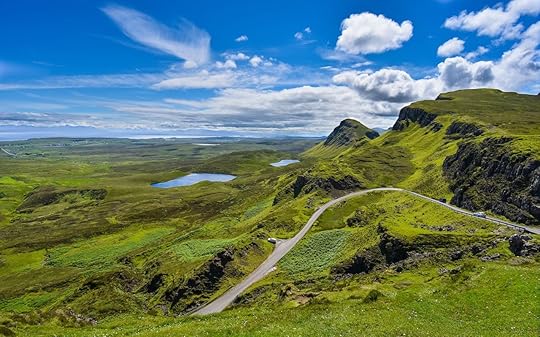
Few adventures are as memorable as exploring the northern reaches of Scotland by road. You’ve learned to drive on the left-hand side (or coerced a British friend into driving), secured a car, and you’re ready to begin your road trip through the Scottish Highlands. There’s only one problem: the Highlands are huge. With so many ancient towns, castle ruins, and imposing mountains scattered throughout this vast landscape, it can be tough to know where to start, or how to plan the most scenic route so you don’t miss anything. The remote Isle of Skye is a complete destination in itself, and you could easily spend a few days losing yourself in the wilderness of Cairngorms National Park. Seeing it all might seem like an insurmountable task, but rest assured — it’s completely doable, and well worth it. Here’s how to plan a truly unforgettable road trip through the Scottish Highlands.
1. Edinburgh to Inverness

Photo: MaraZe/Shutterstock
You can start your trip pretty much anywhere, but Scotland’s capital city is a natural launching point. Before setting out from Edinburgh, explore everything the city has to offer. Check out Edinburgh Castle, the Royal Mile, Princes Gardens, and stumble home through the cobbled alleyways after a night at one of Edinburgh’s famous pubs. It’s the last large city you’ll be seeing for a while.
Just an hour and a half north from Edinburgh you’ll find Cairngorms National Park. The largest national park in the British Isles, Cairngorms is home to castles, gardens, and a plethora of hiking and biking paths. Among the most impressive castles are Braemar and Blair. Blair Castle is easily accessible, just past the town of Pitlochry at the southern edge of the park. Braemar Castle, however, is located in the heart of Cairngorms, and you might need to take a brief detour to see it. You can also check out Balmoral Castle in the northeast of the park — one of the Royal Family’s holiday residences. If castles aren’t your thing and you’d rather plunge into nature, the park has several hiking trails that lead through the woods. The trails are largely non-strenuous, and you can easily spend an entire afternoon wandering through the hidden gardens, rivers, and old bridges of the Scottish wilderness.
When you’ve had your fill of rugged adventure, the coastal town of Inverness is just an hour’s drive north. Considered the cultural capital of the Highlands, it’s the perfect place to rest after a long day and a convenient launching spot for tomorrow’s activities.
2. Loch Ness to the Isle of Skye
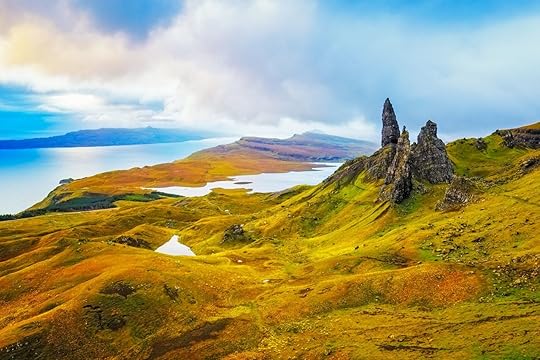
Photo: Lukasz Pajor/Shutterstock
Under an hour’s drive west from Inverness will bring you to Fort Augustus, a town on the shores of the famous Loch Ness. Expecting Fort Augustus to be totally devoid of tourists and gift shops would be a little unreasonable, but the kitsch isn’t too overwhelming, and you can take boat tours of the lake for around $18. Even if you don’t give much weight to the legend of Loch Ness, it’s still pretty cool to sail around the loch, and the ship’s crew is extremely knowledgeable about local history.
Although Loch Ness might be the site most heavily associated with Scotland, Scots know that the Isle of Skye is their most breathtaking destination. Located on the country’s western extremity about two hours from Fort Augustus, Skye is brimming with natural beauty, from ancient rock formations to sweeping ocean vistas and pools straight out of a fairytale. Use the town of Portree as your base and explore from there. The capital of Skye has a whopping 2,500 residents, and it’s perfectly located for seeing everything the island has to offer. A 13-minute drive north of town will bring you to the Old Man of Storr, a set of jagged, iconic rock formations formed by an ancient landslide. The full 2.3-mile hike through the area takes you through these and other rock formations, and over rolling green hills.
After you’ve spent your morning among the rocks, head a half-hour south of Portree to the Fairy Pools. These crystal clear pools at the foot of the Black Cuillins mountain range are famous for their mini-waterfalls and magical aesthetic. Scotland isn’t exactly known for its sunny blue skies, but this is one place where a gray, low-hanging mist seriously adds to the otherworldliness of the scene. Once you’ve hiked the 1.5 miles to the pools, you can even take a dip. Just don’t expect the water to be warm.
3. The west coast
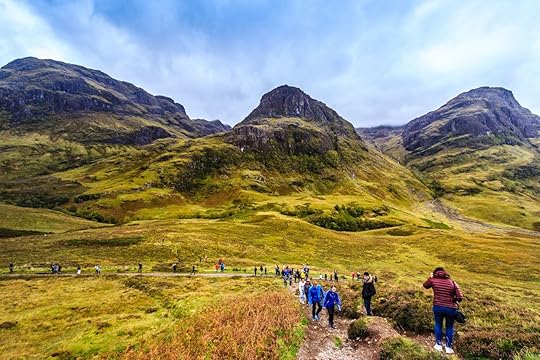
Photo: Natakorn Sapermsap/Shutterstock
You could spend a couple of days exploring the Isle of Skye, but if you’re short on time, begin heading south along the coast until you reach Fort William. On the shores of Loch Linnhe, this town is a perfect base for intrepid hikers looking to climb Ben Nevis, the UK’s highest peak at 4,413 feet. Whether you decide to hike the mountain or just stop for a few photos, continue south through Glencoe, a glen full of striking mountains and waterfalls. This may be the final leg of the trip, but that doesn’t mean the scenery gets any less impressive. Glencoe is one of the Highlands’ most beautiful regions, particularly famous for a group of three massive peaks called “The Three Sisters.” There are several turn-offs where you’ll be able to park and photograph the stunning landscape.
Drive an hour south from Glencoe, and you’ll arrive at Loch Lomond, a massive loch with several hiking trails. You can drive around the park at your leisure and take in the landscape with your eyes, or spend the day exploring by foot. There are biking, hiking, and camping opportunities for those who aren’t quite finished roughing it in the Scottish wilderness.
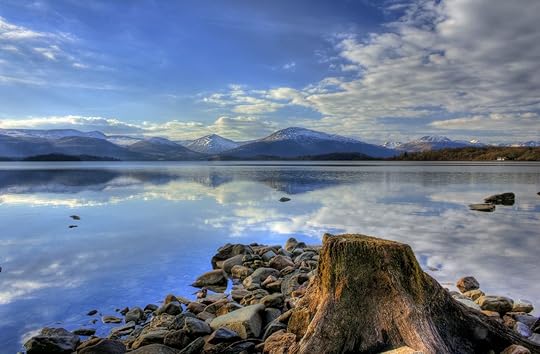
Photo: Paul Messenger/Shutterstock
When you’re done exploring the lake, it’s time to return to civilization. Glasgow, Scotland’s largest city, is just a 45-minute drive south. We recommend spending at least a night here to get a true feel for what this vibrant city has to offer, including seeing the Glasgow Cathedral and Botanic Gardens and maybe treating yourself to a shopping spree on Buchanan Street.
The ride back to Edinburgh shouldn’t take more than an hour, so when you’re ready to return, take your time. If you feel like venturing a bit further south, the seaside town of Ayr is worth visiting or take a detour to Stirling to visit its famous castle — about halfway between Glasgow and Edinburgh. If Stirling Castle inspires you, you can even drive another 15 minutes north to visit Doune Castle, which you might recognize from the iconic opening scene of Monty Python and the Holy Grail.
4. The far north
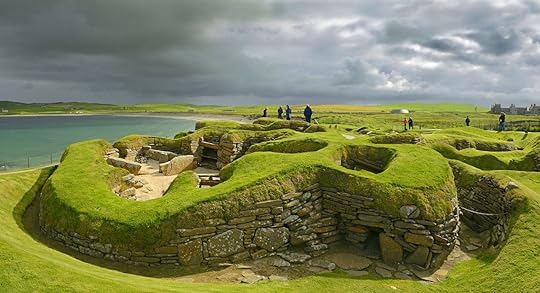
Photo: Pecold/Shutterstock
If you have more time to spend in The Scottish Highlands, you can go all the way north to the Orkney Islands, which are accessible by ferry from Aberdeen. Stay a night in Kirkwall, Orkney’s largest town, and spend the next day exploring Skara Brae — the ruins of a Neolithic settlement on the west coast — or the ancient Midhowe Broch. To venture even farther, take the eight-hour ferry from Kirkwall to the Shetland Islands. There might not be a ton to do on these far-flung isles, but the landscape is out of this world, and you’ll have the satisfaction of knowing you’ve ventured pretty much as far north as you can go in Scotland. 

More like this: 19 epic road trips through Scotland
The post How to plan an epic road trip through the Scottish Highlands appeared first on Matador Network.

Boy’s letter to Qantas CEO

You know a kid is ambitious when they start planning their business ventures at age 10. Alex Jacquot, a young boy from Australia, wrote a letter to Alan Joyce, the CEO of Qantas Airways, for some advice for the airline he wants to start and the response went viral.
Our competitors don't normally ask us for advice, but when an airline leader reached out, we couldn't ignore it.
Naturally, there was only one way to respond: CEO to CEO. pic.twitter.com/JTFpzn5a6Y
— Qantas (@Qantas) 11 mars 2019
“Please take me seriously,” the letter begins. Jacquot goes on to explain how this isn’t just an idle business fantasy, but that he has actually put a great deal of thought into his future business. “I have already started some stuff,” he writes, “like what type of planes I’ll need, flight numbers, catering and more. I’m the CEO of the airline, which by the way is called Oceania Express.” At the end of the letter, he asks Joyce for any tips he may have, particularly with regard to managing long-haul flights. “I’m thinking about, as you are, about an A350 for Sydney/Melbourne to London flights. Seeing as it is a 25-hour flight, we are having a lot of trouble thinking about sleep. Do you have any advice?”
Joyce replied to the boy with a letter, saying that his “number one tip for starting an airline is to put safety front and centre. And to do everything you can to make travel as comfortable and affordable as possible for your passengers.” He also responded to Jacquot’s question about the Sydney-London route: “To help with sleep, we’re looking at different cabin designs that give people spaces to stretch out and exercise.”
For Jacquot, the most exciting part of the letter was probably when Joyce offered to give him a “tour of our Operations Centre (where we keep an eye on every Qantas flight, wherever they are in the world)…I’ll be in touch shortly about finding a time for our meeting.” 
H/T: BBC News

More like this: The world’s safest airlines of 2019
The post Boy writes letter to Qantas CEO for business advice and gets the best response ever appeared first on Matador Network.

Honey can reveal a city’s pollution

According to research conducted between the nonprofit Hives for Humanity and the University of British Columbia, honey collected from urban beehives can actually be used to measure a city’s pollution levels. Published in Nature Sustainability, the study was carried out by testing honey from beehives in six metro Vancouver neighborhoods for lead, zinc, copper, and other elements. Researchers found that the closer a hive was to areas with more traffic, urban density, and shipping ports, the higher its chance of containing high levels of pollutants.
The reason for this phenomenon is that pollutants typically accumulate in the pollen of plants, which are then gathered by bees and transported to hives. It’s not surprising, then, that the hives on the outskirts of Vancouver, like the ones in the agricultural town of Delta, contained higher levels of manganese, which is linked to pesticide use. Scientists even frequently test the hives near the Frankfurt Airport, to keep track of the jet engines’ air pollution.
Although the realization that lead is being stored in beehives might make you a bit wary about consuming honey, Dominique Weis, one of the authors of the study, said there’s no need for concern. Adults would have to eat over two cups of honey every day to reach dangerous lead levels, so unless you’re Winnie the Pooh, you’ll probably be fine. 
H/T: Bee Science

More like this: The 7 most fascinating flowers around the world you need to see in person
The post Honey can be used to determine a city’s pollution levels, new research shows appeared first on Matador Network.

Bay Area gets more rain than Seattle

Seattle might be the US city most stereotypically associated with heavy amounts of rainfall, but this year, the San Francisco’s Bay Area is blowing it out of the water. According to Mike Nicco, ABC7 News meteorologist, “San Francisco, San Jose and Santa Rosa have each received more than 45 days of rain so far this year. Seattle has received 39 days of rain. Portland has received 42.”
While you might think the rain has dampened the spirit of San Franciscans, that’s actually not entirely true. Prior to the rain, the Bay Area had been in the middle of a drought, which has now come to a welcomed end. For now, however, the rain has passed and San Francisco is returning to its regularly scheduled program of sunshine. “The rain train has left the Bay Area,” said Nicco, who forecasts temperatures in the 70s by this weekend. “Spring is finally here.” 
H/T: ABC7 News

More like this: California’s upcoming super bloom has towns gearing up for a tourist invasion
The post The San Francisco Bay Area is getting more rain than Seattle this year appeared first on Matador Network.

March 11, 2019
The best swimming holes in Vermont

In Vermont, a state with only about 600,000 people, the opportunities for a summertime respite abound in the state’s parks and high country. There’s no better release from the unrelenting heat of summer than a dip in a local swimming hole, and here you can find them under bridges, tucked behind barns, or on a several-mile hike through the woods — if you know where to look. With a bit of scouting and a little know-how, these four swimming holes are actually quite easy to find and are perfect for a plunge on a hot day.
1. East Middlebury Gorge — Middlebury
View this post on InstagramA post shared by Isabel Bethencourt (@ibethencourt) on Jul 7, 2017 at 4:26pm PDT
As the Middlebury River tumbles out of the , it passes through a rocky gorge underneath Route 125. A bridge marks the spot where the current is mellow enough to jump into and lounge. Though this swimming hole is easy to find, you’re likely to find just a small handful of locals who’ve come to take advantage of the sunshine and cool water.
Park alongside Route 125 in East Middlebury. Under a bridge, a channel cut by the river presents multiple options for jumping and bathing. Toddlers and adults can wade in the shallower end while the more adventurous can jump the 10-foot ledge and let the current carry them into the shallows, where they can climb out and do it again. For a more remote experience, swim the 20 yards against the current and sunbathe on the couch-sized rocks just upstream.
How to get there: Follow Route 125 east off Highway 7 south of Middlebury until you see the parking area on the side of the road. From Montpelier, the drive takes about an hour and a half.
2. Bristol Falls (aka Bartlett Falls) — Lincoln
View this post on InstagramA post shared by Bob Rush (@birchrunbob) on Aug 31, 2018 at 7:57am PDT
A second central Vermont stash invites visitors to explore further beyond the parking lot. Turning off Route 17 and driving uphill from Lincoln, you’ll see the cars lining the side of the road, but don’t get discouraged — the higher you go, the more secluded it will become. While many quick day-trippers stop by for a dip, many don’t actually walk up to a more secluded area.
The lower portion of the river features several large ledges from which you can jump into the water below, the largest being 15 feet. Here, it’s best to follow local advice and jump where it’s been established as safe. Further upriver, the focus is less on mid-air acrobatics and more on relaxing with a book. When the river gets low during summertime dry spells, water collects in bathtub-sized pools that are perfect for sitting and soaking with your beverage of choice. The north side of the river gets more sun than the shaded south, so take your pick based on how much of a tan you want to come home with.
How to get there: Bristol Falls is located just off Route 116 near the town of Bristol. Signs point drivers towards the parking area. The drive from Montpelier is about one hour.
3. Dorset Quarry — Dorset
View this post on InstagramA post shared by Back Road Ramblers (@back.road.ramblers) on Jul 18, 2018 at 5:09pm PDT
While it’s got a louder, more raucous atmosphere during the day on weekends, in the evening this former quarry site is perfect for a peaceful swim. The Dorset Quarry invites the true thrill-seeker, with ledges ranging a beginner’s jump of under five feet to a stomach-churning 20-foot plunge into the pool below.
In between jumps, take some time to explore around this former marble quarrying site. The stone walls of the pit are smooth and cut at right angles, which makes picking a spot to roll out your picnic blanket easy. Be on the lookout for stone carvings in the rocks as well.
How to get there: Dorset Quarry is just off Route 30 in Green Mountain National Forest. The nearest towns are Dorset and Manchester, both a very quick drive. The drive from Montpelier is about two hours.
4. Townshend Pool — Townshend
View this post on Instagram
Best Olympic National Park trails

Set on Washington state’s massive Olympic Peninsula, Olympic National Park sprawls across more than a million acres, 95 percent of which has been designated as pristine wilderness. It has towering peaks, four different rainforests, over 3,000 miles of rivers and streams, and 73 miles of wilderness coast. With so much awe-inspiring territory, choosing from its 611 trails is a daunting task. Rest easy. These five off-the-beaten-path trails will help you beat the crowds and savor all that the Olympic National Park has to offer.
1. Bogachiel River Trail to Seven Lakes Basin

Photo: 4kclips/Shutterstock
The Bogachiel River Trail, also known as the Bogachiel Rainforest Trail, is a less used but equally majestic alternative to the popular Hoh Rain Forest Trail further south. The trailhead is accessible from the west side of the park off of Undi Road and starts out on national forest lands.
Two shorter loop trails sit outside the national park boundary, so they can be enjoyed on casual day hikes with your four-legged friends. The first of these shorter loops is the Homestead Loop Trail, a one-mile loop that takes you through the 1890 Morgenroth homestead. The second is the Ira Spring Wetland Trail, a three-mile loop through a mossy-laden forest overlooking an active wetlands biome.
Once inside the Olympic National Park boundary, the Bogachiel River Trail will take you all the way into the Seven Lakes Basin. It’s an easy hike through old-growth rainforest and dense undergrowth until the trail splits off from the main Bogachiel River and follows the North Fork Bogachiel as it climbs up to the basin.
Should you go all the way to Bogachiel Peak, the entire trek is about 30 miles. It also happens to be part of the greater Pacific Northwest Trail, a 1,200-mile trail that starts in Glacier National Park, Montana, and ends at Cape Alava, Washington.
2. Dosewallips River Trail
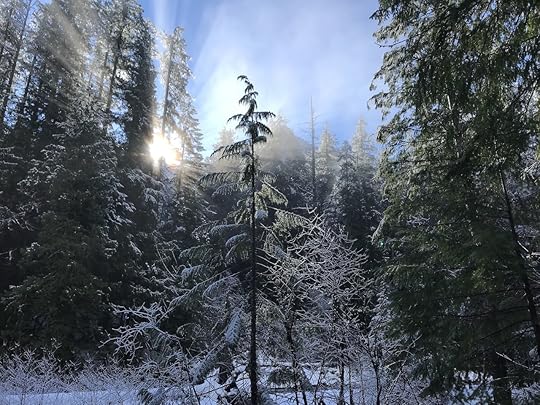
Photo: Todd Holcomb
Elkhorn and Dosewallips Campgrounds used to be accessible by car, but a massive washout in 2002 gave them both back to Mother Nature. Now you can hike the one-and-a-half miles to Elkhorn Campground through a tunnel of trees along a wide, abandoned road.
Although a makeshift trail cuts across the washout, the recommended bypass switchbacks up and over the washout. From the top, you’ll get a panoramic view of the river. The old Dosewallips Road begins to climb past Elkhorn Campground as it makes its way the four miles to Dosewallips Campground. The Dosewallips Falls are an impressive sight and a favorite picture spot for hikers.
The road levels out at the top of the falls and then drops down into the campground. Old speed-limit signs stand among reaching tree branches like some kind of an inside joke reminding you that you could once drive through here. Picnic tables sit next to iron fire rings, heedless of the creeping growth of nature as it reclaims its own.
For some, it’s an eerie feeling, like a ghost town among the towering pines and firs. For others, it’s a tranquil place of luxury camping for backpackers. Either way, it’s worth the visit.
3. North Fork Skokomish River Trail (Staircase) to First Divide

Photo: Tristan Brynildsen/Shutterstock
The North Fork Skokomish River Trail sets off from the Staircase campground at the north end of Lake Cushman, a short distance from the Hood Canal in the southeast corner of Olympic National Park. A ranger station and campground are part of the lower Staircase Loop, a pleasant place to spend the weekend. Be sure to check out the giant cedar while you’re there.
The trail continues along the North Fork Skokomish River with mild elevation gains. Enjoy the pleasant rise of the trail until you reach the Nine Stream campsite. From here, the trail leaves the North Fork Skokomish River and climbs some 2,600 feet over the next four miles to reach First Divide at 4,700 feet.
Passing a picturesque little pond as it crests First Divide, the trail plunges down into the Duckabush River drainage. You can make camp on the open mountainside at Home Sweet Home then climb back up and over First Divide to head back down to Staircase, or you can follow the Duckabush River Trail out to the east side of the park.
4. The Quinault River Trail to Enchanted Valley

Photo: Steve Lagreca/Shutterstock
Enchanted Valley, also known as the Valley of 10,000 Waterfalls, has been a popular destination for visitors since the early 1930s. Back then, $2.50 would buy you a meal and a bed at the Enchanted Valley Chalet, built and operated by the Olympic Recreation Company. Although closed to the public today, the Chalet still stands amidst all the waterfalls, which cascade down Chimney Peak and pour in from Anderson Glacier.
The glacier is 13 miles upriver from the Graves Creek Campground on the south side of Olympic National Park. Don’t be daunted by the 13 miles. The trail follows the Quinault River over charming log bridges through the rainforest and old-growth trees with mild elevation changes. Moss covered trees and proliferation of wild berries in the summer make this a favorite trail for contemplative hikers seeking a meditative journey.
With campsites every three to four miles, this is also a good trail for the family to enjoy together. More ambitious hikers can summit Anderson Pass and follow the Dosewallips River back out to Highway 101 on the east side of the park.
5. Gray Wolf Trail to Cedar Lake

Photo: Todd Holcomb
The Gray Wolf trail is not for the faint of heart, but it will definitely reward the determined. Located on the northeast side of the Olympic National Park near Sequim, Gray Wolf lacks the dense vegetation of the westside rainforests, but it more than makes up for it with steep mountain walls and fiercely cold rivers.
Starting off in national forest land on Forest Service Road 2870, the trail makes its way down to Gray Wolf River and follows it over many ups and downs into the national park. The Gray Wolf Campsite sits at the confluence of the Gray Wolf River and Cameron Creek. A log bridge takes you over the river and on down Cameron Creek. To continue on the Gray Wolf Trail to Cedar Lake, you actually have to backtrack out of the Gray Wolf Campsite and stay to the right towards Falls Camp. Veering left will take you back to the trailhead.
The climb up to Falls Camp is a whole different side of the Gray Wolf Trail. The old trees space out, and sound gets gently muffled by the moss-covered forest floor. The whole scene could be taken right out of a King Arthur story. You’ll pass through a sage field and look up to see a waterfall cascading towards you. Then look down to see Gray Wolf River crashing over the rocks. Set up at Falls Camp, then make the day trip up to Cedar Lake to complete your journey. 

More like this: 5 extraordinary hiking trails you won’t believe are in the United States
The post 5 gorgeous trails not to miss in Olympic National Park appeared first on Matador Network.

Best thermal spas in Budapest

Thermal spas are a big deal in Budapest. There are over 100 natural hot springs below the Hungarian capital, and the thermal waters and their supposed healing powers have been enjoyed since Roman times over 2,000 years ago. Bathing culture was truly established there during the Turkish occupation in the 16th and 17th centuries, so there are several traditional Turkish baths (usually modest) in the city, but visitors will also find opulent spas built during the Austro-Hungarian Empire.
The therapeutic properties of the thermal waters are linked to their high mineral content, which is supposedly good for various illnesses, such as poor circulation, arthritis, skin conditions, degenerative joint diseases, and many others. But even if you aren’t afflicted with any of these ailments, you can’t possibly leave Budapest without joining the locals for a soak in one of the following seven spas. They’re not only super relaxing; they’re also stunningly beautiful.
1. Széchenyi Thermal Bath

Photo: RossHelen/Shutterstock
Széchenyi, the most popular of Budapest’s spas, was built in 1913. The distinctive yellow, Neo-Baroque palace houses 11 indoor thermal pools of varying temperatures with several saunas and steam rooms. There are also three large heated outdoor pools where most visitors relax. Széchenyi offers many services, like massages, pedicures, and aqua-fitness. There’s even a Beer Spa where you soak in thermal water infused with malt, hops, and yeast — all while drinking an unlimited amount of beer. Széchenyi also has a weekly Sparty — a massive party with DJs, lights, and special effects — every Saturday night of the year.
Széchenyi is open every day from 6:00 AM to 10:00 PM. A daily ticket, which includes locker rental, is $19.50 on weekdays and $20.30 on weekends. The spa treatments come at an extra cost and should be booked in advance. You can also rent towels, slippers, and swimming caps. Sparty events run from 10:30 PM to 3:00 AM, and tickets start from $50.50.
2. Gellért Thermal Bath

Photo: posztos/Shutterstock
The Gellért baths, built in 1918, are housed in a beautiful art nouveau building, ornately decorated with statues and mosaics. Navigating the indoor thermal pools, saunas, and steam rooms can be tricky, so consult the map. The glass-roofed central indoor pool surrounded by marble columns is a favorite spot with travelers and Instagrammers, but this pool is specifically for swimming laps, and wearing a swimming cap here is mandatory. Expect to be promptly scolded by the attendant if you get in without one.
Outside there’s a wave pool that only operates in the summer months, a thermal pool, a sauna, and plunge pool, as well as plenty of deck chairs to laze on. The spa at Gellért prides itself on its high-quality massage treatments. You can also enjoy a Hungarian mud treatment, or book a private bath with a glass of Champagne.
Gellért Thermal Bath is open daily from 6:00 AM to 8:00 PM. A daily ticket with locker rental is $21 on weekdays and $21.70 on weekends. This is Budapest’s most expensive bath, but it is arguably the most luxurious, and it does mean that it’s often less crowded than others during peak times.
3. Lukács Baths

Photo: Budapest Gyógyfürdői/Facebook
While the size and grandeur of Széchenyi and Gellért draw crowds of tourists, locals prefer to head to quieter and more affordable baths, and Lukács is one the most popular with Budapestians. The hot spring situated here was used way back in the 12th century for bathing and healing the sick, and the first spa hotel on this site was constructed in the 1880s. The entire complex has since been renovated and modernized, and there are now two outdoor swimming pools and a number of indoor thermal baths, as well as an area reserved for sauna.
The water from this spring is said to be particularly curative, and the outer wall of the spa displays plaques from people expressing their gratitude for being healed here. There is a wide range of wellness treatments available, like massages, Hungarian wine or mud treatments, and a carbon dioxide bath. You can also visit the drinking hall here to fill up your water bottle — there are health benefits not only from soaking in the thermal water but also from consuming it. It’s said to be great for stomach and intestinal problems, gallbladder, kidney stones, and lung airway disorders. But be warned — the water contains lots of sulfurous compounds that give it an egg-like taste.
It is open from 6:00 AM to 10:00 PM every day, and a daily ticket with locker rental starts at $13.90 on weekdays and $14.60 on weekends. Lukács also offers discounted tickets for students, and guests who come in early and leave before 8:00 AM or arrive after 6:00 PM.
4. Rudas Baths

Photo: Budapest Gyógyfürdői/Facebook
This Turkish bath was built in the 1550s. It has a traditional central octagonal pool below a dome with small colored-glass skylights that filter in some sunshine, giving the place a mystical atmosphere. If you come during the week, you’ll have a truly authentic experience. Rudas is the only spa in Budapest that still follows the tradition of single-sex bathing days: Mondays, Wednesdays, Thursdays, and Fridays only men are allowed; Tuesdays are for women; and the weekend is co-ed. On single-sex days, a swimsuit isn’t mandatory, and most locals go nude.
The wellness area was renovated in 2014, and its main feature is the rooftop panoramic pool from where you can gaze out over the Danube. Rudas also offers night-bathing hours on Friday and Saturday if you like the idea of a late-night soak under the stars but the antics of Sparty don’t appeal to you.
Rudas is open daily from 8:00 AM to 10:00 PM, and weekend night bathing times are from 10:00 PM to 4:00 AM on Friday and Saturdays. A daily thermal, swimming pool, and wellness ticket, which includes access to the rooftop pool and terrace, as well as locker rental is $18.50 on weekdays and $23.15 on weekends.
5. Király Baths

Photo: Budapest Gyógyfürdői/Facebook
Király is a traditional Ottoman-style bath built in the 16th century. It was badly damaged during WWII and renovated in 1950 but still has very traditional architecture. It’s one of the smallest baths in the city, but it offers an authentic experience. Király is the only thermal bath not built directly on a hot spring — the water here comes from the same spring that supplies Lukács. There are three thermal pools and an immersion pool.
Király is very affordable. A daily ticket with locker rental costs $9.25. There’s a range of services available, such as massages and a sauna. The baths are open daily from 9:00 AM to 9:00 PM. If you want to do more than soak all day, note that Király has an escape game on site. It’s set in 1936 and titled “Prisoners of Budapest.”
6. Veli Bej Bath

Photo: Irgalmasok Veli Bej Fürdője/Facebook
This Turkish spa was built in the 16th century and is said to be the oldest in Budapest. Over the centuries, the bath has changed ownership several times and had a few extensions and renovations. Today, it belongs to and is operated by the Hospitaller Order of Saint John of God. It offers the traditional central octagonal thermal pool along with a Finnish sauna, infrared sauna, a Kneipp walk pool, and various massages. This bath is small, so the capacity is limited to no more than 80 people — it’s never crowded.
A ticket allows you to stay for a maximum of three hours, which is $8.90 on weekday mornings and evenings and $11 on weekday afternoons and weekends. It is open daily from 6:00 AM to noon and 3:00 PM to 9:00 PM.
7. Palatinus Strand Baths

Photo: Ungvari Attila/Shutterstock
Palatinus Strand is a large spa and waterpark complex on Margaret Island, a 225-acre island on the Danube river in the middle of Budapest. It was constructed in 1912 and was the first open-air bath in the city. This is the most family-friendly spa as all ages are welcome; thermal water is not recommended to those under 14, so kids aren’t permitted at most of the other thermal baths. Some of the indoor thermal pools are designated for kids, but they’ll be far more excited by the water slides and wave pool outside. The outdoor pools are accessible only during the summer, but the indoor sauna area and wellness section are open all year long.
Admission is $8.90 on weekdays and $10.35 on weekends. Discounted family and children tickets are also available. 

More like this: How ‘ruin bars’ became the hottest drinking spots in Budapest
The post The 7 fanciest thermal spas in Budapest you need to check out appeared first on Matador Network.

Best flower fields in the US
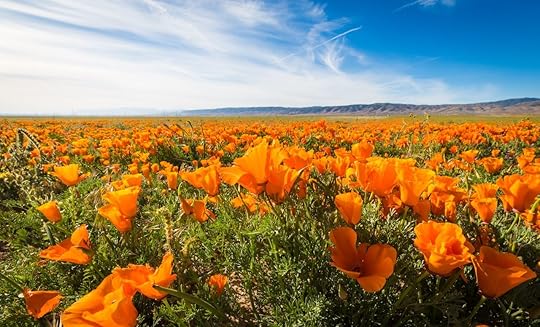
The snow is melting, the terrible, frigid weather is retreating, and soon fields of colorful flowers will begin to pop up all over the US. At these 11 spots, you’ll find yourself lost among blooms in every color, shape, size, and texture; from fragrant lavender to bright orange California poppies to pastel tulips straight out of a Dutch storybook. Just remember the cardinal rule of floral tourism: no picking the flowers. Appreciate their beauty, but leave it for the next person to enjoy.
1. Wooden Shoe Tulip Farm — Clackamas County, Oregon

Photo: Victoria Ditkovsky/Shutterstock
Flower lovers come from near and far to attend the annual Tulip Festival at Wooden Shoe Tulip Farm in Woodburn, Oregon, which takes place in March and April each year. Acres of brightly colored tulips spring from the ground and mark the arrival of a season of renewal. The festival kicks off with an off-road Tulip Trail Run through the fields and around the farm in distances of 5K, 10K, and half marathon. The Wooden Shoe Tulip Farm is also a vineyard, so when you’re done looking at the pretty blooms, you can go wine tasting — or go on a hot-air balloon ride, depending on the weather.
2. Borrego Springs — Anza-Borrego Desert State Park, California

Photo: Anton Foltin/Shutterstock
The largest state park in California, Anza-Borrego Desert State Park is mostly desert, but when the conditions are right — when the temperatures and rainfall create the optimal growing environment in the spring– the area erupts in a multicolored array of wildflowers, including blossoms like the desert sunflower, sand verbena, lupine, brown-eyed evening primrose, desert lilies, and yellow desert dandelion. This phenomenon is known as a super bloom and last happened in 2017, though the conditions are looking right for it again this year, and some blooms are already beginning to emerge. Park hours are dawn until dusk.
3. Texas Hill Country

Photo: kan_khampanya/Shutterstock
In Texas Hill Country, located in central and southern Texas, the state flower of Texas — the bluebonnet — hits peak bloom in early April and can commonly be found along the side of the highways that crisscross the area. Some Hill Country hot spots that promise good chances of spring bluebonnet sightings include Llano, Georgetown, Fredericksburg, and Marble Falls. If you’re lucky, you may spot fields of red poppies, too — another common Texas spring bloom.
4. Mount Rainier National Park — Washington

Photo: Diane Fetzner/Shutterstock
Both the meadows and forests of Mount Rainier National Park come alive with native wildflowers when the weather is right in the late spring and early summer — the state park is home to over 100 varieties of wildflowers in a cacophony of colors, but they only bloom for a short time. Hopeful flower followers can check the park’s wildflower status to see what’s blooming and plan their visit accordingly. Meadows with names like Paradise and Sunrise are popular among visitors, who often opt to hike the paths or bike the trails, and promise a good chance of wildflower sightings.
5. Pelindaba Lavender Farm — San Juan Islands, Washington

Photo: Pelindaba Lavender/Facebook
Pelindaba Lavender Farm, located on Friday Harbor in the San Juan Islands of Washington state, covers 25 acres and offers visitors not only stunning scenes (and smells) of fresh lavender but also views of a small nearby lake and the Olympic Mountains in the distance. Bushels of soothing purple lavender bloom each year, and there’s an annual San Juan Island Lavender Festival that takes place every July. Visitors to the farm can tour the organic fields, the nursery, and the onsite essential oil distillery, as well as browse educational exhibits and lavender-based products in the farm’s store.
6. Sledd’s U-Pick Strawberry Farm — Mims, Florida

Photo: Sledd’s U-Pick Farm/Facebook
A small family-owned farm located on the Space Coast of central Florida, Sledd’s U-Pick Strawberry Farm gives fruit lovers the chance to come pick their own strawberries and shop for other delicious produce — but it also offers the chance to get lost in a rare four-acre sunflower maze, where head-high yellow flowers will shield you for around an hour of finding your way out. The farm provides regular updates on the sunflowers’ status on its official Facebook page.
7. Flower fields at Carlsbad Ranch — Carlsbad, California

Photo: Larisa Grib/Shutterstock
Open March through May, the 50 acres of technicolor at the flower fields at Carlsbad Ranch are among the most popular springtime destinations in California and beyond, with blooms of thousands of giant Tecolote ranunculus flowers raising the area to life and boldly announcing the arrival of spring each year. The fields have deep roots in the area; an early settler named Luther Gage first began cultivating these lush fields all the way back in the 1920s.
Admission to the ranch costs $18 per adult, $16 for seniors (60 and over), and $9 for children aged 3-10, and season passes are available, too, for those who can’t get enough. Visitors to the fields can also enjoy an American flag made entirely of flowers, wagon rides pulled by an antique tractor, artist gardens, sluice mining, a sweet pea maze, and more.
8. Crested Butte, Colorado

Photo: Hale Kell/Shutterstock
Crested Butte, located in Gunnison National Forest, is considered by some to be the wildflower capital of Colorado. Varieties of flowers found at Crested Butte include bright yellow mule’s ear sunflowers, heartleaf arnica, sneezeweed, purple sky pilot, cool blue columbine, magenta elephantella, and more.
A celebration of the bloom called Crested Butte Wildflower Festival has been held annually since 1986 and gives floral fanatics a chance to take hikes and workshops centered around the wildflowers, with classes on topics like wildflower medicine and wildflower photography.
9. Antelope Valley — Mojave Desert, California
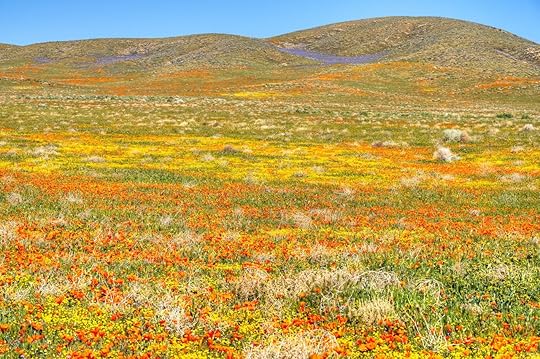
Photo: Anton Foltin/Shutterstock
You wouldn’t think of a desert as the first place to find verdant fields of bright flowers, but in the Antelope Valley’s Poppy Reserve on the western end of the Mojave, a sea of bright orange California poppies (the state flower) blooms each spring. Visitors can traverse the park’s hiking trails, and should make sure to stay on the official trails only, as walking in the poppies destroys the environment and could result in a ticket. The poppies open up around mid-morning each day and curl back up in the late afternoon (or if it’s cold), so plan your visit accordingly; the park is open from sunrise to sunset year-round.
10. Holland, Michigan

Photo: Craig Sterken/Shutterstock
In Holland, Michigan, six million tulips are planted in parks, gardens, and private fields around the city, usually blooming in wild swaths of vibrant color in April and May.
Popular spots if you’re going the self-guided tulip touring route include Veldheer Tulip Gardens, Window on the Waterfront downtown, Nelis’ Dutch Village, and the Windmill Island Gardens. Windmill Island Gardens is a popular option because it hosts Tulip Time, which includes attractions like playgrounds and displays, Dutch food, windmill tours, Amsterdam street organ demonstrations — and over 100,000 tulips. The experience is open from 9:00 AM to 6:00 PM during this time, and admission costs $10 for adults and $5 for youths aged 3-15.
11. Skagit Valley Tulip Festival — Skagit Valley, Washington

Photo: Pierre Leclerc/Shutterstock
Held every April, the Skagit Valley Tulip Festival in Skagit Valley, Washington, is really more like a drive-through tulip tour, as there is no one official site to enter. Instead, blooming tulip fields are spread all throughout the Skagit Valley, where they have been farmed since the early 1900s. Visitors can enjoy taking in the sights of acres upon acres of colorful tulips all across the valley. Two show gardens where over one million spring bulbs are planted — RoozenGaarde and Tulip Town — charge admission. Check out the festival brochure to plan your visit. 

More like this: The 7 most fascinating flowers around the world you need to see in person
The post The 11 most stunning flower fields in the US appeared first on Matador Network.

9 must-drink Irish whiskeys

Irish whiskey is, for many people, a simple and cheap spirit you order when taking shots. Yet year after year, Irish whiskey is growing into something much, much more than that bottle of Jamo you’re used to seeing and feel comfortable ordering. In 2008, there were just three Irish whiskey distilleries. Today, Ireland has more than 20.
All this is to say that it’s about time you consider more than just the green bottle of Jameson at the bar. That means looking at some of Jameson’s other offerings (especially Jameson Caskmates Stout) but also checking out the bottles from the many other distilleries of the Emerald Isle.
“Only five years ago it was common to be at an Irish Pub in America that would stock more single malt scotch than Irish Whiskey,” Tim Herlihy, co-author of From Barley to Blarney, a Whiskey’s Lover’s Guide to Ireland, tells Matador Network. “Times are changing; Americans are becoming knowledgeable, curious drinkers, and as more Irish whiskey arrives in the US, we’ve no doubt America will become well-versed in our native spirit.”
It’s now easy to find an Irish whiskey for sipping, for mixing, or for an upgraded version of the beer-and-a-shot you already know and love.
“We often have a pint on the side [in Ireland], though we call it a ‘pint of plain and a ball of malt’ (meaning Guinness and a whiskey) as opposed to a boilermaker,” Herlihy says. “You’ll also hear it referred to as a tall one and small one. People in Ireland today tend to treasure tradition while also embracing Irish whiskey in cocktails and highballs.”
These are the Irish whiskeys you need to keep in mind this St. Patrick’s Day — and every day.
1. West Cork 10 Year Single Malt

Photo: West Cork Distillers/Facebook
Single malt is a category normally associated with Scotch whisky, but Scotland doesn’t have a monopoly on making spirits from one grain. West Cork Distillers was founded in 2008, and this particular whiskey is sourced from other distilleries. It’s non-chill filtered, which gives the spirit some body, and it has fruity apple notes along with toffee. An ideal whiskey for sipping neat after a meal or with friends.
Price: $36
2. The Tyrconnell Port Cask Finish
Something magic happens when whiskey spends time in a barrel that was previously used to age port. The Tyrconnell Port Cask Finish spends 10 years in old bourbon casks before being put in port barrels for six to eight months. That last part adds a mellow and slight sweetness to the deep and fruity whiskey (think apples and cinnamon) that stays with you. It’s at a bit of a higher price point than others on this list, but if you’re looking for an Irish whiskey to sip by the fire linger or over while having a spirited conversation, this is your bottle.
Price: $69
3. Sexton

Photo: The Sexton/Facebook
Another single malt Irish whiskey, Sexton uses Irish barley and is distilled in copper pot stills. What sets it apart is that it’s aged for at least four years in barrels that used to hold oloroso sherry. The barrels keep Sexton on the sweeter side, but it has enough depth and bite to stay interesting. You can’t miss this one on the shelves thanks to its hexagonal bottle and steampunk vibe.
Price: $30
4. John L. Sullivan
John L. Sullivan (the whiskey) is named after an Irish-American bare-knuckle boxer who was the last World Bare-Knuckle Champion. Sullivan (the man) kept his title after going for 75 rounds in 1889, which made him a hero celebrated in Irish pubs in the Northeast. The whiskey won’t knock you out with any powerful flavors, but it’s a fun, affordable, and easy-drinking Irish whiskey to shoot alongside a Guinness.
Price: $22
5. Proper No. Twelve

Photo: Proper Whiskey/Facebook
Proper No. Twelve is the most-followed liquor brand on Instagram, and it only launched in 2018. It’s also is the official whiskey of MMA fighter Conor McGregor. Those two things are definitely related, but aren’t you curious as to what the hype is about? Proper No. Twelve is more the type of whiskey you bring to a party than one that you’d you sip while reading James Joyce, but every whiskey has its appropriate time and place, and you could do a lot worse than showing up to a gathering with this in hand.
Price: $27
6. Green Spot
The green spot of Green Spot refers to the paint mark left on barrels of whiskey in the cellar. Different colors reference different ages, and green stands for seven to eight years. Green Spot is a mix of whiskeys aged in ex-sherry casks and ex-bourbon casks, with nutty vanilla and toffee notes. Sip it sitting down because this whiskey deserves your attention. Fans of Green Spot should also check out the brand’s older (and pricier) expressions Yellow Spot and Red Spot.
Price: $57
7. Slane

Photo: Slane Whiskey/Facebook
Slane is a rockstar’s Irish whiskey. The brand is centered around the Slane Castle Estate home, which is one of the best Irish whiskey tour experiences you can have when visiting Ireland. The castle itself is the home of Rock ‘n’ Roll in Ireland, and bands like The Rolling Stones, Guns ‘N Roses, and Bob Dylan have played there. The whiskey is aged in virgin oak, ex-American whiskey barrels, and ex-sherry barrels. It’s simple and easy drinking — the perfect spirit for a party.
Price: $27
8. Tullamore D.E.W.
A blended whiskey that’s light and easy drinking, Tullamore D.E.W. gets the back half of its name from Daniel E. Williams, who worked for Tullamore in the 1880s. If you’ve scanned the back of a bar anytime recently, there’s a good chance that you’ve seen the rectangle bottle of Tullamore D.E.W., but you don’t have to stick with the basic flavor profiles of Irish whiskey with Tullamore. Mix up your Irish whiskey drinking experience with Tullamore D.E.W.’s Caribbean Cask finish whiskey, which is perfect for adding into tropical cocktails.
Price: $23
9. Knappogue Castle 12-Year Old

Photo: Knappogue Castle Irish Whiskey/Facebook
Castles and whiskey just go together in Ireland, and few places show that like Knappogue. The Knappogue Castle was purchased by an American in the 1960s, and casks of whiskey came with the estate. It’s some of the tastiest and most citrusy Irish whiskey you can find today. The 12-Year Old is a good place to start, and you can move onto the 16-Year Old Sherry Cask finish and 14-Year Old Twin Wood if you like it. 

More like this: Why Ireland should be on every whiskey lover’s bucket list
The post 9 Irish whiskeys to drink that aren’t Jameson appeared first on Matador Network.

Matador Network's Blog
- Matador Network's profile
- 6 followers



